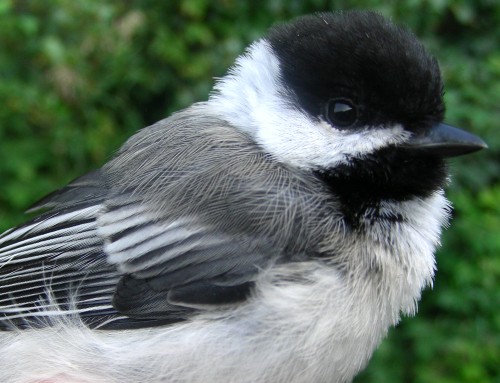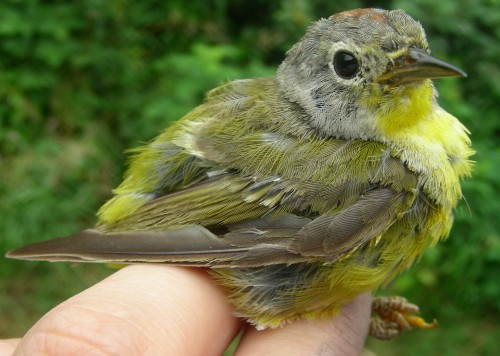|
McGILL BIRD OBSERVATORY |
|||||||||||||||||||||||||||||||||||||||||||||||||||||||||||||||||||||
Welcome
to the McGill Bird Observatory weekly report.
Click here for a complete listing of our archives.
Banders-in-charge: Marie-Anne
Hudson Notes: MBO’s second full fall season got off to a surprisingly busy start on Wednesday, with 51 birds banded, one third of a full week’s worth from last fall! The pace didn’t quite keep up, and with one day almost totally rained out thanks to an explosive thunderstorm and several others ridiculously humid and hot, we closed out the week with 210 new birds banded. Of course when a new season is started everything seems new, but we’ve set a few new records for the site and for 2007 this past week, in addition to beginning our fall list anew: two new species banded for 2007 (Northern Cardinal and Scarlet Tanager) and two new species observed for 2007 (American Kestrel and Sora). All of “our” birds are special to us, but two birds are especially worth mentioning this week. We recapped one of the young Eastern Kingbirds we banded in late June while still in the nest, indicating that the young hang around the nest site for over one month (we fully suspected this because kingbirds are anything but quiet!). We also recapped a very shabby-looking Veery undergoing a complete head-to-tail moult, and when we checked our records, we discovered that we had banded it as a juvenile in July 2005, which meant that it likely returned to its natal area to breed. These two birds perfectly illustrate some of the patterns and information we can deduce from banding – and we hope to recap them again next year! We banded 58 more birds this week than at this time last year. The top spot definitely belongs to the Song Sparrow, which are absolutely everywhere, including our J-Trap. In fact, this was the only species the J-trap caught! We’re still hoping the blackbird flocks will come down, enticed by the seed we put out, but we’re not holding our breath. Most of the entries in the top ten are new since we did not get to do much banding in July, and none are more surprising than the Rose-breasted Grosbeak in fourth place. Had the weekly totals been calculated yesterday, the results would have been very different since we banded eight grosbeaks today! Most of the birds banded to date are young ones either hatched here or beginning their southward trek from nearby breeding grounds (Nashville Warblers breed further north, for example), and the grosbeaks are no exception. Interestingly, the top three spots are the same as last year.
The ten species most frequently observed this week are very similar to those from July, and from the first week of last year. Red-winged Blackbirds continue to dominate and are beginning to form rather large flocks, as are the Common Grackles. Song Sparrows and Black-capped Chickadees sing and twitter from virtually every grass hummock and shrub, while the Yellow Warblers skulk around in the hawthorns, no longer singing. The high number of birds banded this week might reflect the fact that we’ve replaced several old nets with wonderfully dark new ones! Many thanks to the generous “net adopters” who have helped us cover the cost of these new nets. Please keep your eyes peeled for the net signs that will be erected shortly with the nets’ new names, as specified by the donors. We’d also like to thank Dave Bird for the fantastic push mower he donated to MBO. We’ve been having a blast running around trimming our net lanes and paths down so they’re nice and neat, and the site has never looked better! One last item of note: we returned to Le Nichoir again this week to band a few youngsters (35 to be exact) almost ready to head out on their own. Among them, a sweet little Chimney Swift that clung to our shirts, a Yellow-bellied Sapsucker that knew exactly when to peck, and a whole whack of extremely intelligent Blue Jays very capable of evading our nets. We wish them the best of luck and thank Le Nichoir for taking such good care of them – they were all in great shape!
|


